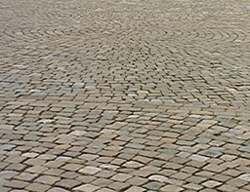|
Cobblestone and paving are some of the most beautiful surfaces known to man ... timeless classics that have been popular for centuries because of their hard wearing characteristics and consistent good looks.
From the earliest days, they've been chosen as a stylish yet practical finish.
Now, there's even more of a resurgence in paving and renewed interest in using their strength and performance in innovative and exciting ways.
Pavers can be laid in a wide range of patterns, from traditional straights or diagonals to herringbones, stretcher bond and basket weave. And of course, there's the added element of colour.
Christchurch city is a shining example of how paving has been effectively used to beautify streets, squares and boulevards as a modern architectural feature that reflects a certain historic charm while keeping pace with today's hectic lifestyle and provides a rugged, economically viable alternative.
In many ways, Christchurch is leading the country in its rediscovery of all the advantages of paving ... jobs such as these in the city's renowned Cathedral Square are shown some of the opportunities available.
This project is one where modern technology is also playing a part. |
The History of Paving
3000 BC
 Minoans build roads from segmental units. Minoans build roads from segmental units. |
620 BC
The first bitumen-set brick pavers
are used in Babylon for roading.
500 BC
The Persian Royal Road of about 2500km is completed, running from Turkey to the Persian Gulf.
AD200
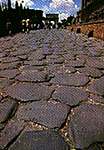 Romans complete 85,000km of main roads from Newcastle, England to Damascus, in Syria using segmental stone paving. Romans complete 85,000km of main roads from Newcastle, England to Damascus, in Syria using segmental stone paving. |
1750
Englishman John Metcalf builds 240km of highways, mainly in Lancashire
and Cheshire.
1870
Clay pavers make their first appearance on the streets of North America.
Late 1800s
The first concrete pavers appear in Germany.
1926
The US Bureau of Roads test the strength of paving for roading.
1936
The first experimental road is built with concrete pavers at Neuss, in Germany.
1951
The first concrete pavers are produced in the Netherlands as a substitute for clay units.
1952
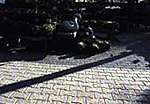 Pavers shaped like dog-bones are introduced in The Netherlands. Pavers shaped like dog-bones are introduced in The Netherlands. |
1964
Germany produces the first product standard for concrete pavers.
1966
The Netherlands follows suit.
1970s
Machines start to produce pavers.
1972
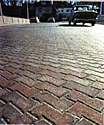 Canada introduces a product standard for precast concrete paving slabs. (It was revised in 1999).
Canada introduces a product standard for precast concrete paving slabs. (It was revised in 1999). |
1972
The first European-made paving machine lands in the United States.
1973
North America gets its first paving manufacturer: KNR Concrete in Toronto.
1980
A watershed year: the first international conference on concrete block paving, held in Newcastle, England. Future conferences are held in The Netherlands, Italy, New Zealand, Australia, Norway, Israel, and Columbia. The basis of much of the written knowledge about paving has arisen from these conferences.
1982
Pavers make their mark on big industrial sites, as their strength and longevity is recognised. The first big project: a coal terminal in Virginia, the second a container yard in Edmonton, Canada.
1983
 Concrete pavers are used for the first time on an airfield (in Luton, England).
Concrete pavers are used for the first time on an airfield (in Luton, England). |
1988
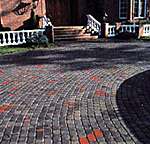 US concrete paver production reaches 8 million square metres, thanks to the growth of the residential market. US concrete paver production reaches 8 million square metres, thanks to the growth of the residential market. |
1985
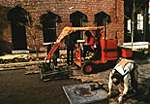 First mechanically installed street in Dayton, Ohio. First mechanically installed street in Dayton, Ohio. |
1992
 Pavers are used for the first time at a North American airport (Dallas/Fort Worth International Airport). Pavers are used for the first time at a North American airport (Dallas/Fort Worth International Airport). |
1993
The Interlocking Concrete Pavement Institute is formed in North America.
1998
 400,000 square metres of paving is laid at Hong Kong's new international airport. 400,000 square metres of paving is laid at Hong Kong's new international airport. |
2000
The 5000th anniversary of segmental paving.
|

